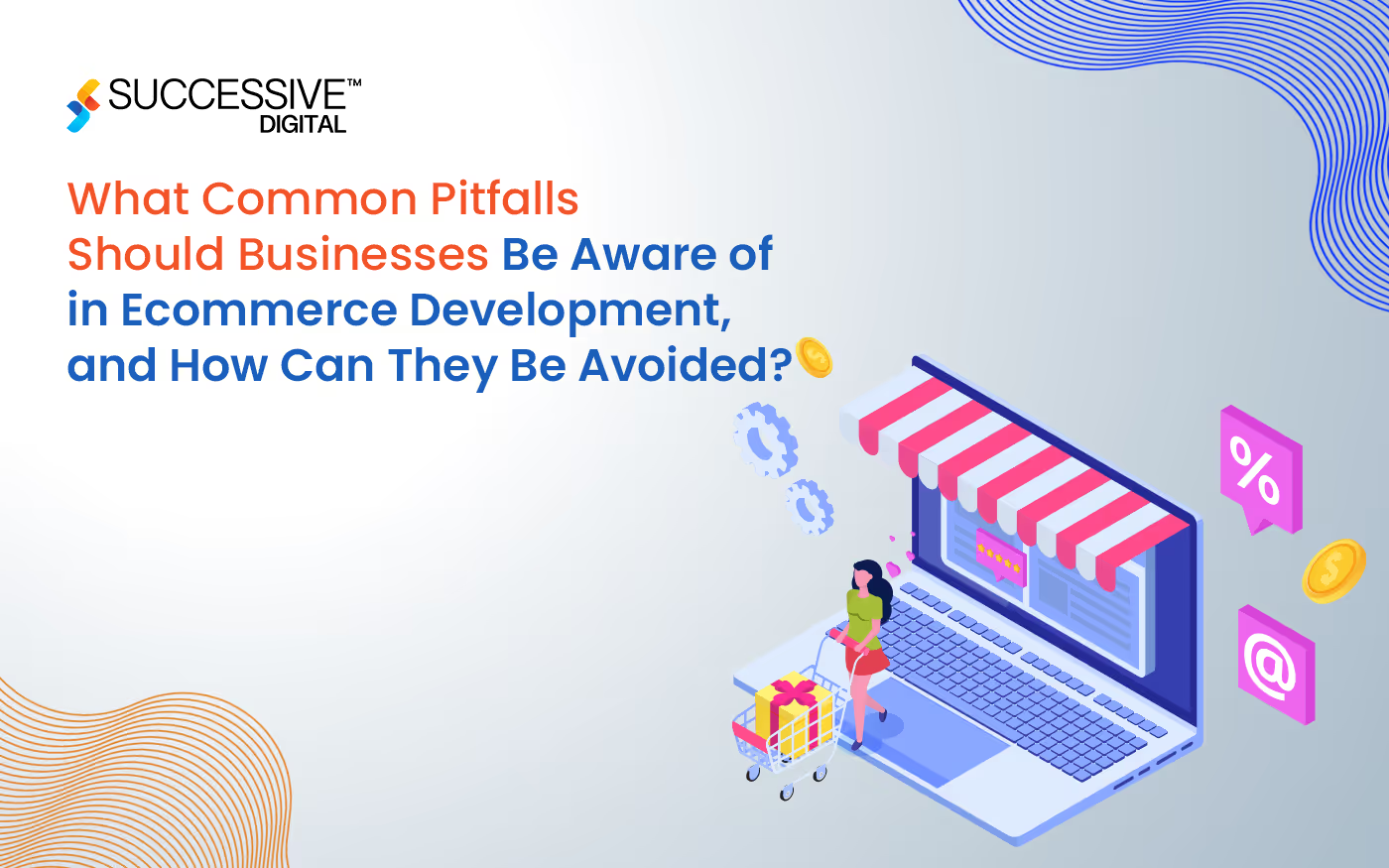In the rapidly developing digital infrastructure among businesses, e-commerce provides a vital element of business success. The fast expansion of online shopping has driven e-commerce to the forefront, necessitating businesses to reinforce their digital infrastructure to stay competitive. However, amid the promise of increase, various complexities and pitfalls of e-commerce initiatives can disrupt progress.As businesses embark on the journey of e-commerce development, it is vital to navigate the challenges of ecommerce with the right strategy and approach. One of the critical mistakes is embarking on the ecommerce journey without a clear sense of direction or a solid plan. With a roadmap outlining objectives, timelines, and resource allocation, brands can avoid struggling in a sea of ambiguity, leading to wasted operational costs and useless results.Moreover, the importance of consumer experience must be considered. A poorly designed user interface, slow performance, or inadequate device responsiveness can deter customers from the e-commerce platform, undermining the overall project's success. This blog delves into such common e-commerce mistakes and explores techniques for overcoming them.
Lack of Clear Objectives and Planning
The absence of clear objectives and meticulous planning poses an uncertain block in ecommerce development. With a coherent roadmap defining specific goals, timelines, and proper resource allocation, businesses can avoid wandering and dissipating efforts and resources. This lack of planning obstructs robust development and amplifies the chance of ignored possibilities and suboptimal consequences.
- Define Clear Objectives: Establish, measurable, workable, applicable, and time-bound objectives for the ecommerce project.
- Develop a Comprehensive Plan: Create a detailed roadmap outlining challenge milestones, timelines, finances, and resource allocation.
- Conduct Marketplace Studies: Gain insights into the target market, competition, trends, and marketplace requirements to draft the ecommerce strategy.
Poor User Experience (UX) Design
Poor user experience (UX) design can profoundly undermine the achievement of an ecommerce project. As a critical pitfall of e-commerce, cumbersome interfaces, complicated navigation, and slow loading times repel prospects, hindering conversion rates and lowering credibility. Moreover, failure to optimize e-commerce platforms for mobile devices distances a substantial volume of the audience. Investing in an intuitive layout, streamlined navigation, and responsive layouts is paramount to encourage a continuous and satisfactory user experience, ultimately driving engagement, retention, and conversions.
- Prioritize UX/UI Design: Invest in intuitive and visually attractive layout elements that enhance the customer experience and facilitate seamless navigation.
- Optimize for Mobile: With the increasing prevalence of mobile devices, ensure the ecommerce platform is fully optimized for mobile devices to cater to a much broader target market.
- Conduct Usability Testing: Continuously gather user feedbacks and conduct usability testing to perceive challenges of ecommerce and areas for improvement at the user level.
Inadequate Security Measures
Insufficient security measures give a great chance to ecommerce establishments, exposing them to malicious cyber threats and capability facts breaches. The absence of robust encryption protocols and adherence to vital protection requirements like PCI DSS and GDPR leaves purchaser information susceptible to exploitation. These common ecommerce mistakes amplify beyond financial losses to irreparable damage to brand recognition. Proactive measures, SSL encryption, regular security audits, and strict compliance adherence are vital safeguards to oppose such threats.
- Implement SSL encryption: Secure the ecommerce site with Secure Sockets Layer (SSL) encryption to encrypt data transmission and defend sensitive data, including price info.
- Comply with Enterprise Standards: Adhere to enterprise guidelines with the Payment Card Industry Data Security Standard (PCI DSS) and General Data Protection Regulation (GDPR) to ensure compliance with data protection and legal standards.
- Regular Security Audits: Conduct security and vulnerability checks to identify and address potential security vulnerabilities proactively.
Poor Performance and Scalability
Poor performance and scalability are one of the key challenges of ecommerce development. As visitors increase and product offerings become bigger, an inadequately optimized platform may show slow loading instances, downtime, and bad user experience. Failure to anticipate and deal with scalability needs can bring customer satisfaction down. Leveraging caching mechanisms, content delivery networks, and scalable infrastructure solutions is vital to ensure premier overall performance and seamless scalability, thereby safeguarding the competitiveness and viability of the ecommerce platform.
- Choose a Scalable eCommerce Platform: Select an e-commerce platform that offers scalability and flexibility to extend the enterprise's ecommerce growth without compromising overall performance.
- Optimize Performance: Implement performance optimization strategies, such as caching, content distribution networks (CDNs), and code optimization, to enhance web page load times and overall digital commerce performance.
- Monitor and Examine Performance: Continuously monitor website performance metrics and personal behavior to identify bottlenecks and areas for optimization.
Insufficient Marketing and Customer Acquisition Strategies
Insufficient marketing and customer acquisition strategies are common ecommerce mistakes that can restrict the increase and success of ecommerce projects. Without effective promotion and outreach efforts, businesses may additionally battle to draw and retain clients within the fiercely competitive digital marketplace. Neglecting massive advertising investing in search engine optimization, social media, and e-mail advertising, and marketing limits visibility and engagement opportunities.
- Develop a Complete Advertising Approach: To interact with a larger audience, utilize a blend of digital advertising and marketing channels, including SEO, social media advertising, email marketing, and paid advertising.
- Leverage Content Advertising and Marketing: Create remarkable, applicable content, such as blog posts, product information details, and videos, to educate and entice potential customers while establishing the brand.
- Implement Retargeting Campaigns: Use retargeting techniques to re-engage site visitors who have proven interest in the products but have yet to make a buy, thereby increasing conversion costs and maximizing ROI.
In the dynamic landscape of ecommerce, successful fulfillment hinges on navigating the myriad of challenging situations with precision and foresight. From the outset, businesses must define clear objectives, devise complete plans, and prioritize consumer experience, security, overall performance, and scalability. Regardless of careful planning, the challenges inside ecommerce persist. However, via collaboration with a professional ecommerce app development company, businesses benefit from access to specialized information and strategic direction, allowing them to conquer obstacles and realize their overall potential in their ecommerce projects. With steadfast willpower for excellence and innovation, brands can embark on their ecommerce journey and sustain themselves in the competitive global marketplace.
.avif)



.webp)






.jpg)









